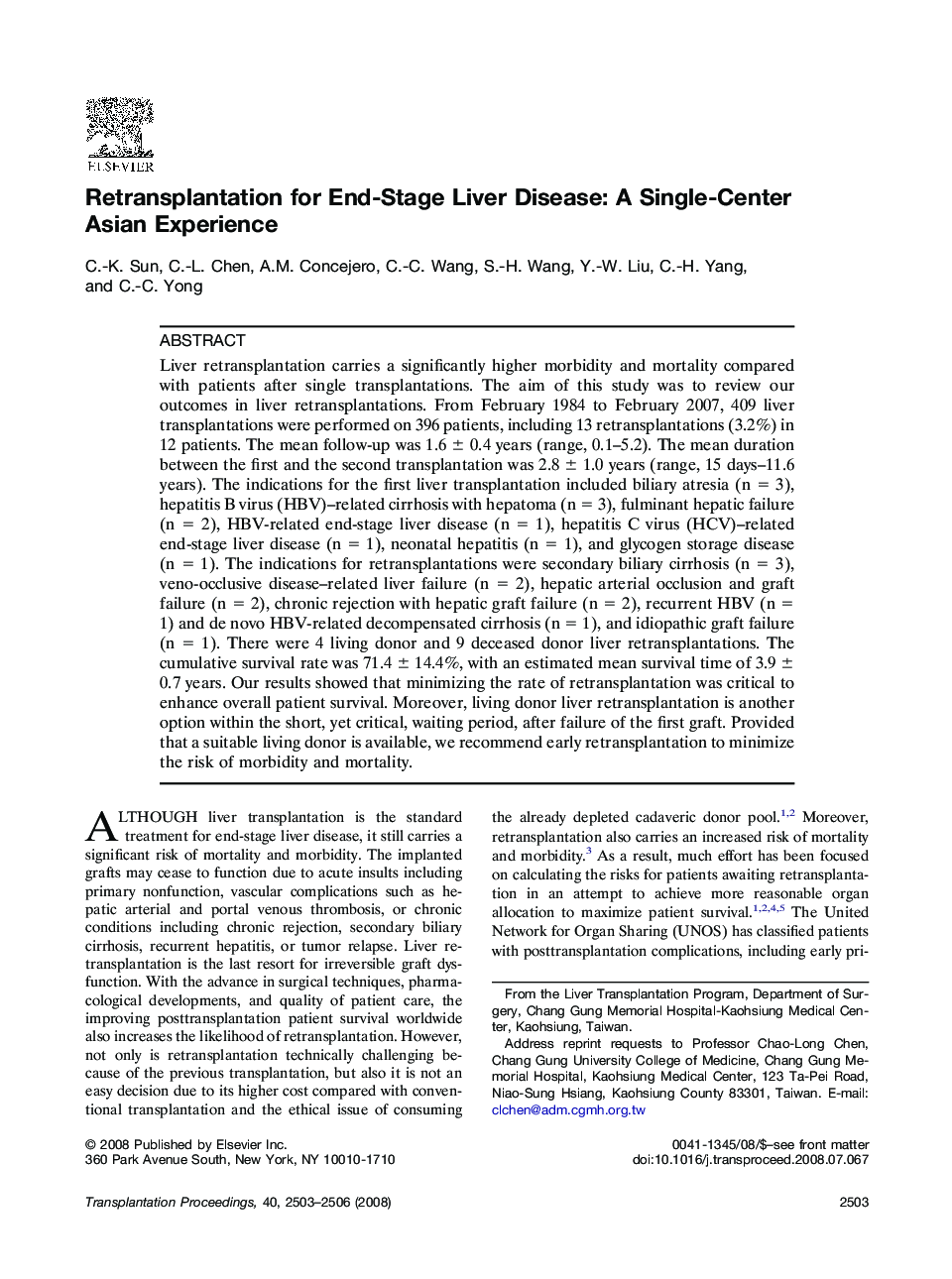| Article ID | Journal | Published Year | Pages | File Type |
|---|---|---|---|---|
| 4261976 | Transplantation Proceedings | 2008 | 4 Pages |
Liver retransplantation carries a significantly higher morbidity and mortality compared with patients after single transplantations. The aim of this study was to review our outcomes in liver retransplantations. From February 1984 to February 2007, 409 liver transplantations were performed on 396 patients, including 13 retransplantations (3.2%) in 12 patients. The mean follow-up was 1.6 ± 0.4 years (range, 0.1–5.2). The mean duration between the first and the second transplantation was 2.8 ± 1.0 years (range, 15 days–11.6 years). The indications for the first liver transplantation included biliary atresia (n = 3), hepatitis B virus (HBV)–related cirrhosis with hepatoma (n = 3), fulminant hepatic failure (n = 2), HBV-related end-stage liver disease (n = 1), hepatitis C virus (HCV)–related end-stage liver disease (n = 1), neonatal hepatitis (n = 1), and glycogen storage disease (n = 1). The indications for retransplantations were secondary biliary cirrhosis (n = 3), veno-occlusive disease–related liver failure (n = 2), hepatic arterial occlusion and graft failure (n = 2), chronic rejection with hepatic graft failure (n = 2), recurrent HBV (n = 1) and de novo HBV-related decompensated cirrhosis (n = 1), and idiopathic graft failure (n = 1). There were 4 living donor and 9 deceased donor liver retransplantations. The cumulative survival rate was 71.4 ± 14.4%, with an estimated mean survival time of 3.9 ± 0.7 years. Our results showed that minimizing the rate of retransplantation was critical to enhance overall patient survival. Moreover, living donor liver retransplantation is another option within the short, yet critical, waiting period, after failure of the first graft. Provided that a suitable living donor is available, we recommend early retransplantation to minimize the risk of morbidity and mortality.
